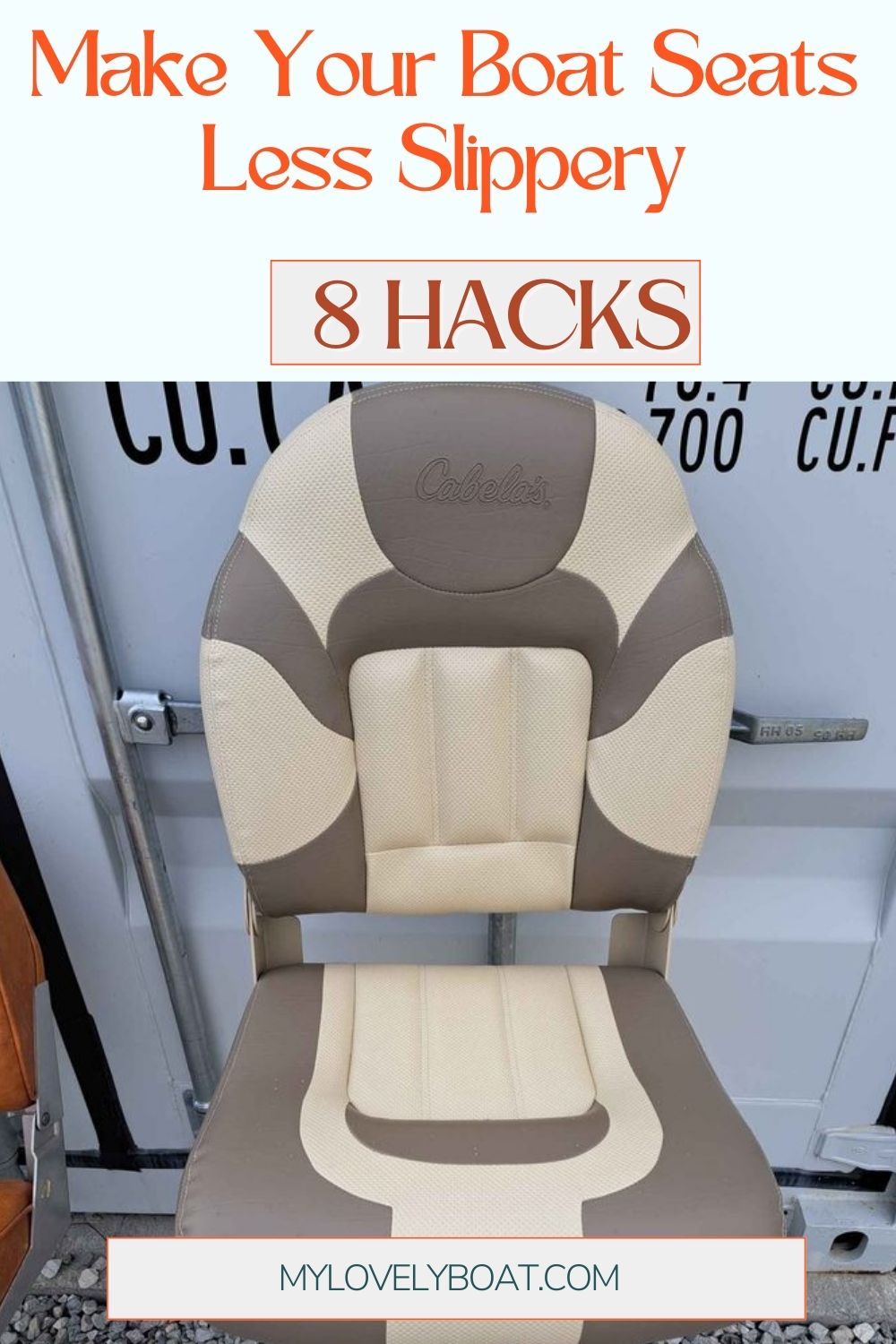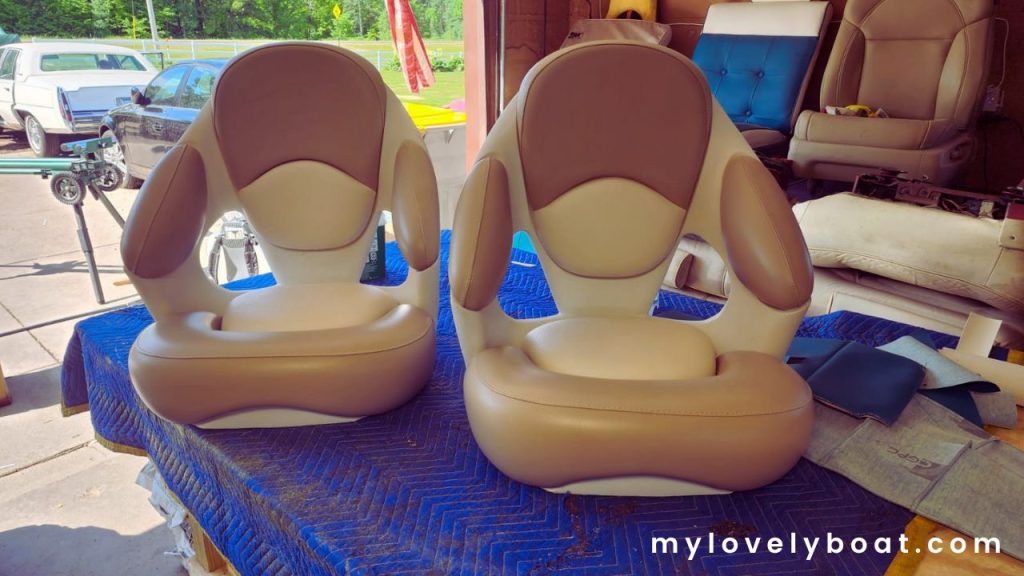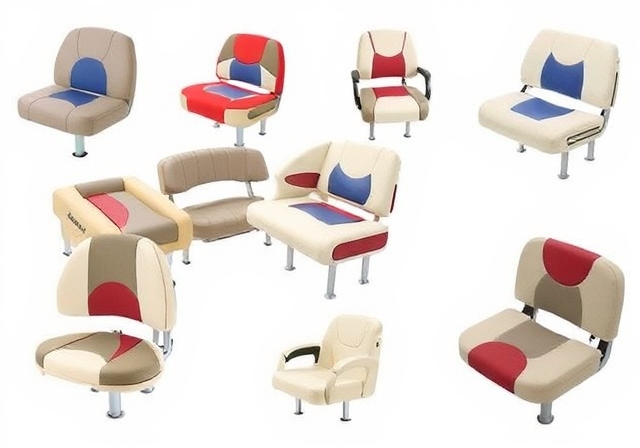
Slip-resistant boat seats are essential to a safe and enjoyable boating experience. Slippery boat seats can be dangerous, leading to accidents and injuries, especially when the boat is in motion or during rough water conditions.
This article will explore eight hacks to improve the slip resistance of your boat seats, ensuring a safer and more comfortable ride for everyone on board.
Why is it Important to Have Non-Slip Boat Seats?
Non-slip boat seats are crucial for a safe and enjoyable boating experience. Slippery seats can cause various issues, making it essential to invest in non-slip solutions. Here are some key reasons why non-slip boat seats are vital:
- Safety: Non-slip seats reduce the risk of accidents and injuries caused by slipping or sliding while the boat is in motion.
- Comfort: Non-slip surfaces make for more comfortable seating experiences by providing optimal grip and support.
- Confidence: Knowing that your boat seats are slip-resistant can help you to relax on a waterway.
- Aesthetics: Non-slip solutions can not only protect the seats of your boat, but they can also make them look nicer.
- Increased Boat Value: Well-maintained, non-slip boat seats can contribute to a higher resale value for your vessel.
Read More: Top 20 Fun Boat Accessories
Hacks for Making Your Boat Seat Less Slippery

Hack 1: Use Non-Skid Mats
Benefits of non-skid mats for boat seats: Non-skid mats provide an excellent solution for slippery boat seats. They offer increased traction, reducing the likelihood of slipping and falling, and are typically made from durable materials that can withstand harsh marine environments.
Different types of non-skid mats are available: Several types of non-skid mats are available, including rubber, vinyl, and foam. Each material offers unique benefits, so choosing the one that best suits your needs and preferences is essential.
How to install non-skid mats on boat seats: Installing non-skid mats on boat seats is a straightforward process. Clean the seat surface, measure and cut the mat to size, and secure it using adhesive or fasteners.
Read More: The Ultimate Guide to Deferent Types of Boat Seats
2: Apply Grip Pads
Explanation of grip pads and how they work: Grip pads are adhesive-backed, rubber or foam pads that increase traction on slippery surfaces. They’re designed to be applied directly to the seat surface and create a non-slip layer.
Types of grip pads: Various grip pads are available, ranging from simple, pre-cut shapes to customizable sheets that can be cut to fit your seat dimensions.
DIY guide on applying grip pads on boat seats: To apply grip pads to your boat seats, follow these steps:
- Clean the seat surface thoroughly.
- Measure and cut the grip pad to fit your seat.
- Peel off the adhesive backing and carefully apply the pad to the seat, smoothing out any bubbles or wrinkles.
Read More: How to Store Your Boat Seat Off-Season (10 Ways)
Hack 3: Change Seat Covers
Explanation of how seat covers can affect slip resistance: The material and texture of your boat seat covers can significantly impact their slip resistance. Some fabrics, such as vinyl, can become slippery when wet, while others, like neoprene or mesh, offer a better grip.
Best types of seat cover to use for slip resistance: Look for seat covers made from materials like neoprene, mesh, or textured fabrics for optimal slip resistance. These materials provide better traction and are less likely to become slippery when wet.
Attaching seat covers for optimal slip-resistance:
Following the manufacturer’s instructions, attach slip-resistant seat covers, ensuring a snug and secure fit. This may involve using straps, buckles, or a drawstring to keep the cover in place.
Read More: 10 Tricks to Keep Your Boat Seats Looking New
Hack 4: Add DIY Traction Pads
A detailed guide on how to make traction pads at home: Creating your DIY traction pads is an affordable and customizable solution for slippery boat seats. Follow these steps:
- Purchase a sheet of closed-cell foam or rubber material.
- Measure and cut the material to fit your boat seat.
- Attach the material to the seat using a strong adhesive or fasteners.
Benefits of using DIY traction pads: DIY traction pads offer several benefits, including cost savings, customization, and the ability to replace or update them as needed.
Materials needed for DIY traction pads: To create DIY traction pads, you’ll need the following:
- Closed-cell foam or rubber material
- Measuring tape
- Scissors or utility knife
- Adhesive or fasteners
Hack 5: Install Non-Slip Tape
Overview of non-slip tape for boat seats: Non-slip tape is an adhesive-backed tape that provides a textured surface for extra traction on slippery surfaces. It’s an affordable and easy way to improve the slip resistance of boat seats.
Types of non-slip tape available: Several varieties, including abrasive and non-abrasive choices, are available. Select the one that best meets your requirements and preferences.
How to apply non-slip tape to boat seats: To apply non-slip tape to your boat seats, follow these steps:
- Clean the seat surface thoroughly.
- Measure and cut the tape to fit your seat.
- Peel off the adhesive backing and carefully apply the tape to the seat, smoothing out any bubbles or wrinkles.
Hack 6: Use Anti-Slip Coatings
Explanation of anti-slip coatings: Anti-slip coatings are specifically designed paints or sealants that provide a textured, slip-resistant surface when applied to boat seats. They are a long-lasting and robust option for boosting slide resistance.
Types of anti-slip coatings: The variety of anti-slip coatings available today include epoxy-based, polyurethane, and acrylic options. Each type offers unique benefits—so research before deciding which works best for you!
How to apply anti-slip coatings to boat seats: Follow the manufacturer’s directions for putting an anti-slip coating on your boat seats, which generally entails washing the surface, applying the coating with a brush or roller, and allowing it to dry before use.
Read More: How to Clean Your Boat Seats: A Comprehensive Guide
Hack 7: Place Hand Towels on Seats
Benefits of using hand towels for slip-resistance: Towels can improve boat seat traction. Extra cushioning and traction will reduce the likelihood of slipping on wet surfaces.
How to place hand towels on boat seats: To use hand towels for slip-resistance, fold or roll them and place them on the seat surface. Ensure the towel covers the seats’ surfaces as much as possible to maximize effectiveness.
Different ways to secure hand towels on seats: To secure hand towels on boat seats, consider using straps, bungee cords, or clips to keep them in place during use.
Hack 8: Keep Boat Seats Dry
Explanation of how moisture affects slip-resistance: Moisture affects the slip-resistance of boat seats, making them slippery and dangerous. Maintaining optimal slip resistance is essential for keeping your boat seats dry.
Tips on how to keep boat seats dry: To keep your boat seats dry, follow these tips:
- Use a boat cover when not in use to protect seats from rain and moisture.
- Wipe down seats with a towel after use or exposure to water.
- Store cushions and removable seat components in a dry location when not in use.
Importance of regular seat maintenance: Maintaining your boat seats, including cleaning and inspecting them for damage, is crucial to ensuring their long-term slip resistance.
Conclusion
In conclusion, various hacks are available to improve the slip-resistance of your boat seats, including using non-skid mats, grip pads, seat covers, DIY traction pads, non-slip tape, anti-slip coatings, hand towels, and keeping your seats dry. Implementing these hacks can create a safer and more enjoyable boating experience for everyone on board.
So, go ahead and try out these hacks, and enjoy a slip-free boating adventure!

I am a freelance writer passionate about watersports and the great outdoors. I have many years of experience in the marine industry, and I enjoy sharing my knowledge and expertise with others so that they can get the most out of their boating experiences. I like fishing, kayaking, and exploring new destinations by boat whenever I have time. Contact Us: Linkedin












